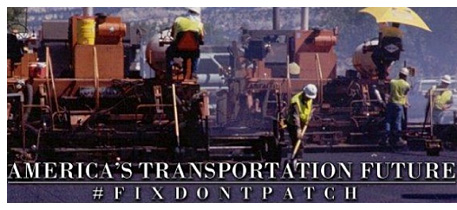
The U.S. interstate highway system at 60 showing signs of decline,
lack of attention
As transportation groups observe the 60th anniversary of the interstate highway system, many say it has gone in a few decades from an economy-lifting network to a system that is increasingly clogged and decaying from lack of sufficient investment.
President Eisenhower signed the Federal-Aid Highway Act, which was also known as the National Interstate and Defense Highways Act, into law on June 29, 1956. Within a few years the nation would see construction begin replacing a network of two-lane U.S. highways with the multi-lane, high-speed interstate highway system that continued to spur economic growth as it built out in the next few decades.
A number of groups plan special events to mark the week, and to point to the challenge ahead.
The TRIP research group said it plans to release on June 27 a new report on the aging interstate system, which would be an update from 10 years ago when TRIP reported on it at 50 years old. That 2006 report said the interstate network was still the "nation's most critical transportation link despite growing traffic congestion," but said the congestion "is likely to get worse unless the nation commits to new vision of a 21st century highway system."
Since then, Congress approved a major round of new investments only in the 2009 Recovery Act to help climb out of a severe recession. Lawmakers then struggled to pass long-term surface transportation investment measures until December's five-year FAST Act, which provides only modest funding increases to the core highway program.
However, the FAST Act also provided $5 million to fund a study by the Transportation Research Board on "actions needed to upgrade and restore the Dwight D. Eisenhower National System of Interstate and Defense Highways to its role as a premier system that meets the growing and shifting demands of the 21st century."
On June 29, the American Road & Transportation Builders Association and the American Trucking Association held a three-hour "lunch and policy discussion" at the Washington, D.C., National Press Club.
Scheduled participants included Sen. Jim Inhofe, R-Okla., who chairs the Environment and Public Works Committee, and Jeff Paniati, CEO of the Institute of Transportation Engineers.
Bud Wright, executive director of the American Association of State Highway and Transportation Officials, told the AASHTO Journal that the anniversary is a good time for the entire country to take stock of what the interstate system has been and what it is now.
"The interstate highways gave the United States incredible gains in mobility of personal travel and cargo shipments as new segments opened in state after state. It was a remarkable achievement that helped make the U.S. economy the world's leader," he said.
"However, we must face the facts of where we are today," Wright added. "Some of the original interstate bridges are still in place long after their projected life spans and long after traffic on them has outpaced original design levels. Large sections of these once-fabulous roadways are in disrepair. State departments of transportation are struggling to maintain their portions of this critical national network while demand keeps growing, even when many states have substantially increased their highway funding."
Wright said the interstate system is a good example of a national infrastructure asset, much like the nation's waterways and airspace, since the entire country relies on its various pieces to work well. "As a nation, we must ask ourselves if we are taking care of that asset and increasing its value and the economic payoff it delivers, or if we are letting it languish and lose value," he said.
Published 07-01-16